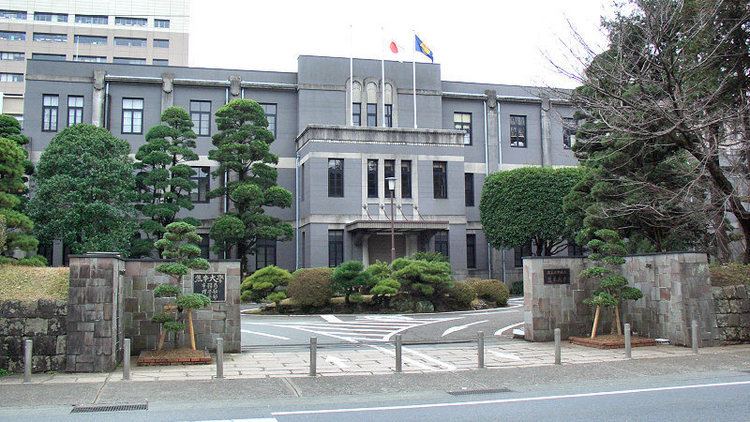Type Public (National) Academic staff 1,012 Postgraduates 2,079 Undergraduate tuition and fees 535,800 JPY (2012) Phone +81 96-344-2111 Undergraduates 8,075 | President Isao Taniguchi Administrative staff 1,544 Acceptance rate 43.6% (2015) Total enrollment 10,237 (1 May 2015) Founded 31 May 1949 | |
 | ||
Established Founded 1925,Chartered 1949 Notable alumni Takehiko Inoue, Yoshiko Miyazaki, Miyako Miyazaki Similar Kyushu University, Kagoshima University, Nagasaki University, Saga University, Kyushu Institute of Technology Profiles | ||
Kumamoto University (熊本大学, Kumamoto Daigaku), abbreviated to Kumadai (熊大), is a Japanese national university located in Kumamoto, Kumamoto Prefecture in the Kyushu region of Japan. It was established on May 31, 1949, at which time the following institutions were subsumed into it; Kumamoto Teachers College (established in 1874), Kumamoto Pharmaceutical College (1885), the Fifth High School (1887), Kumamoto Medical College (1896), and Kumamoto Technical College (1906).
Contents
- History
- Campuses
- Kurokami North Campus
- Kurokami South Campus
- Honjo kuhonji Campus
- Oe Campus
- Organization
- Academics
- Politics
- Business
- Art
- Entertainment
- Literature
- Athletes
- References
Currently, the university has seven faculties and eight graduate schools with a total of around 10,000 Japanese students and 400 international students from Asia, North America, South America, Europe, Africa, and Oceania. It's one of the Super Global Universities selected by the Japanese Ministry of Education, Culture, Sports, Science and Technology (MEXT).
History
The university was chartered by the Showa government on May 31, 1949, under a new Japanese education system reforming older system, merging five institutions of higher education in the city of Kumamoto which includes Kumamoto Teachers College (熊本師範学校 Kumamoto shihan gakkō) established in 1987, Kumamoto Pharmaceutical College (熊本薬学専門学校 Kumamoto yakugaku semmon gakkō) established in 1885, the Fifth High School (第五高等学校 Dai-go kōtō gakkō) established in 1887, Kumamoto Medical College (熊本医科大学 Kumamoto ika daigaku) established in 1896 and Kumamoto Technical College (熊本高等工業学校 Kumamoto kōtō kōgyō gakkō) established in 1897 though the precursor of the university was founded in 1925 as a prefectural university of Kumamoto and subsequently it was reorganized as a national university in 1929.
The hub of the university at the time of foundation was the Fifth High School, which was a center for higher learning in western Japan during the Meiji period and the university began with six departments, with an enrollment of about 1,100 students. In 1955 the Graduate School of Medicine was established at the university and other graduate schools were subsequently founded.
In 2004 Kumamoto University became a National University Corporation under the National University Corporation Law.
Although the university was founded during the Taishō period (1912–1926), it has earlier roots in Saishunkan (再春館) established on September in 1756 as Han school of Kumamoto Domain and Banjien (藩滋園) established on July in 1756 by Shigekata Hosokawa, who was a Japanese samurai daimyō of the Edo period.
Campuses
The university has four campuses, two campuses in the Kurokami district, the others in the Honjo-kuhonji district and the Oe district respectively, in the city of Kumamoto.
Kurokami North Campus
Both of Kurokami North and South Campuses are the main campus, which are located in the Kurokami district of Kumamoto at the foot of Mount Tatsuda.
Kurokami South Campus
The headquarters building of the university is located in this campus.
Honjo-kuhonji Campus
Oe Campus
Organization
The university has about 10,000 students enrolled in its undergraduate and graduate programs. There are seven faculties, eight graduate schools and their affiliated centers and institutes. In addition, the university operates a kindergarten, an elementary school, a junior high school, and a school for disabled children.
